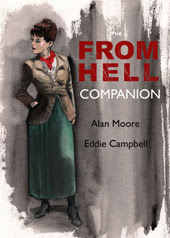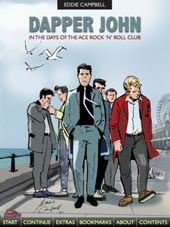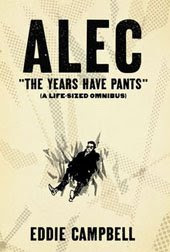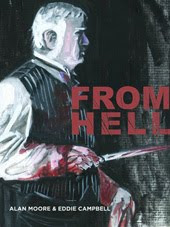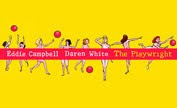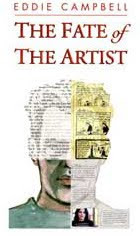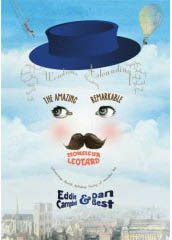I left this disquisition at the point at which a hundred thousand words and more had been expended arguing over the meanings of words. And while I believe it is a thing to be avoided at all costs, I invariably find myself trapped in a situation where I have to deal with the subject. In short I am called upon to explain la novela Gráfica, as happened in the Barcelona interview described at the beginning of this series of posts.
So I have evolved a strategy for getting through the process without giving in or falling prey to the innumerable stupidities to which the comics world has subjected it. The first problem to navigate past the idea that it is a format. At this early juncture I usually bring up Will Eisner, who has a substantial reputation with both the regressive and the progressive crowds. This artist is often given as the initiating spark for the whole thing. Whether it is true or not is one of those arguments that leads to tears and should be avoided. So I'm not saying he was or he wasn't, he's just a place to start that is likely to be accepted by most parties.
What did Will Eisner mean when he called that first book of his a 'graphic novel'? The naysayers are quick to point out that it is a collection of short stories, and in the field of writing, a
bunch of short stories does not make a novel. The problem with these naysayers is that they are usually the same people who argue that 'graphic novel' is a format, without any concern for the fact that in the field of writing,
a novel is not a format. In other words, they are trying to have it both ways, though unconsciously, since the contradiction does not normally occur to them. I don't think the majority of comics readers can separate the idea of 'form', where comics are concerned, from 'format'. Put it this way, a song is a musical form and an mp3 is a format. It should be easy enough to separate those two concepts and apply the same principle to comics.
Will Eisner clearly wasn't thinking of a graphic novel as a format. This is easy enough to demonstrate. In the same month that A Contract With God appeared from Baronet books., October 1978, he also started serializing
Life on another Planet in the Kitchen Sink Press Spirit magazine, in 16 page 'signatures', with 'A GRAPHIC NOVEL printed on the very first page. We may deduce that he had given up on the idea of another book like the first one. The reader was instructed to cut out the pages, fold them and secure at the side with thread or whatever. It is perhaps to be observed that he was thinking his graphic novels were going to be in a small format like paperback books, but let's not confuse the issue here, as later episodes were all printed full page size (somebody probably pointed out to Will that folks nowadays are not inclined to cut up their magazines, so anybody who cut out the first one would have done so in vain.) In his mind he was drawing a long-form comic, which he called a graphic novel, and he was serializing it. That is, he didn't retroactively decide it was a graphic novel. I only mention that in relation to one of the Spanish arguments.

(From Spirit magazine #19, oct 1978. Kitchen Sink Press)
So, what did he mean by novel then? The answer that gets me out of this catch-22, invariably leads to an even trickier quandary. He was making a bid for 'literariness'. The problem I find myself in at this juncture is that I must then say what I mean by 'literary', and my own idea of it is somewhat different from Will's. His idea of literary would have implied a shelf of books that you keep, in contrast to the low status of the throw-away comic, and in subject it would perhaps have been bounded by Ring Lardner at the populist end and Booth Tarkington at the more serious (consider his grand family saga,
The Name of the Game in comparison to
The Magnificent Ambersons). Whether Eisner ever reached the goal of his ambition is a separate argument. For this one, let it simply be noted that he often said he imagined a comic that went beyond 'stories of pursuit and vengeance', that dealt with more profound subjects "such as a man's relationship to God". From the beginning he wanted to create a different kind of comic.
As to my idea of literary then; can comics be literature? (let's not lose sight of the fact that the graphic novel is a kind of comics). This question is a minefield. On the one hand I suspect that there is a school of thought that rejects such a pretension, that insists that the essence of comics is that they are always anti-status quo, subversive in some way or other, and that literature is the stuff foisted on you in school and comics are the natural antidote to society's streamlining of us. On the other there is the intellectual standpoint that insists that comics are an autonomous art-form and not just a genre within an older traditional culture of reading.
The latter attitude holds to the presumption that literariness implies that the graphic element of a comic would be considered subservient, when the parts should be formal equals.
Caroline Small answered this problem recently at The Hooded Utilitarian:" I really resist the idea that literature is made of words (and also I suppose the idea that pictures are not made of words in the same way that all things are texts.) Literature is not prose or story. It is a register, a cluster of ways of making sense and making meaning that makes sense (or that meaningfully makes non-sense). It is a register that is almost always associated with words, but “word-thing” is not any sort of essence of literature to me. It is more “thing, often with words.” Or like Baetens says “a way that parameters are logically used.” The parameters are usually words, but that is just the “dispatch.” Once literature means how the parameter is used it can be made of anything."
As I said in yet another interview recently, Shaun Tan's The Arrival is a book without a single word in it, and I have no problem in thinking of it as literature. And Will Eisner was a practical man who would have had no time for the kind of complicated modern literary theory as read above, but there would have been no problem for him in considering a quality 'graphic novel' to be literature, whether it be Maus, or Palestine, or Persepolis, or Jimmy Corrigan. It should be recognized that, to a significant extent, the literature of our times has pictures.
(to be continued)
Labels: The Spaniard in the works











